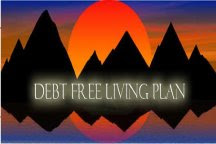
Today, many Americans find themselves in a financial crisis.
Personal bankruptcies are being declared in record numbers with one out of every 100 families experiencing this tragic legal process, according to a survey conducted by American Express.
Although the stigma has lessened, the effects can be long-lasting. Getting a job or an insurance policy can be very difficult if personal records are marred by bankruptcy.
Acquiring material possessions, taking trips to popular vacation destinations or dining out regularly at restaurants will eventually lead to faded memories. But the aftereffects of excessive credit card charges can linger for decades due to the power of compound interest. Paying three to four times the original purchase amount in fees and interest charges is a definite possibility. Making minimum payments on credit cards or other unsecured debt will eventually bury consumers in debt quicksand.
Here are six tips that can help to completely eliminate personal debt if individuals are willing to make some lifestyle changes:
-Itemize debts from the smallest balance to the largest regardless of the interest rates. List the minimum amounts due on each bill. Make the largest payment possible on the smallest debt and make minimum payments on all other consumer debt. Once Debt #1 is fully paid, apply the payment from Debt #1 to Debt #2 (plus its minimum payment). Work through each debt obligation using this strategy until all debt is fully paid. Some financial advisors would suggest reducing high interest rate balances first but the goal here is to gain pay-off victories and to keep momentum rather than being concerned with interest rates. Attempting to pay-off a large, high interest rate balance first could lead to frustration and diffuse any good intentions to eliminate debt.
-Cut up the credit cards. This will take some courage but it's necessary in order to get out of debt completely. If a plastic card is necessary, consider a debit card which acts like cash, not credit.
-Don't borrow by establishing a home equity line of credit. The inability to make these loan payments, could eventually lead to a home going into foreclosure.
-Create a money spending plan (commonly known as a budget) based on the "10-10-80" formula. The first 10% goes to charitable organizations or to a place of worship. The next 10% goes to personal savings. The final 80% is used to pay for basic living expenses. Keep in mind, that these are ideal percentages. Consider lower percentages to start if it's difficult to give or save 10%. The importance is in the order, giving, saving, and spending.
-PAY CASH for things. No cash means no purchase.
-Get debt counseling but be cautious of credit counseling agencies, debt management plans (DMP), debt settlement or debt consolidation companies. There are too many predatory "debt counseling" companies looking to make a fast buck at someone's expense. The best approach is to consult with a financial planner, preferably a CERTIFIED FINANCIAL PLANNER™ professional (CFP®). These individuals have a client's welfare as their top priority. Their fee is a small price to pay if it means getting out of debt permanently.
Making the transition from a credit card debt lifestyle to cash-basis living takes time, effort and discipline but the rewards make it worthwhile.
Digging out of a debt hole requires a change in mindset. If financially distressed individuals are willing to commit to change, the road can eventually lead to financial freedom and peace of mind.

No comments:
Post a Comment